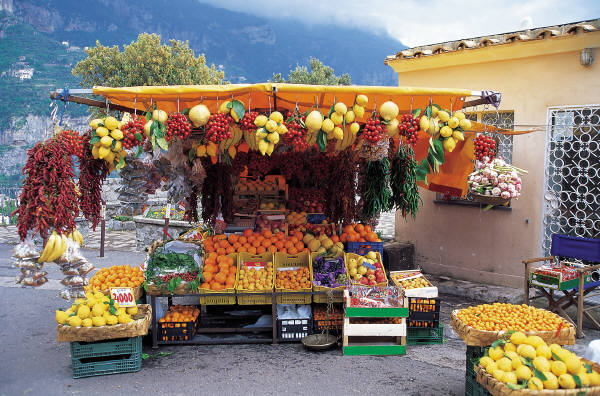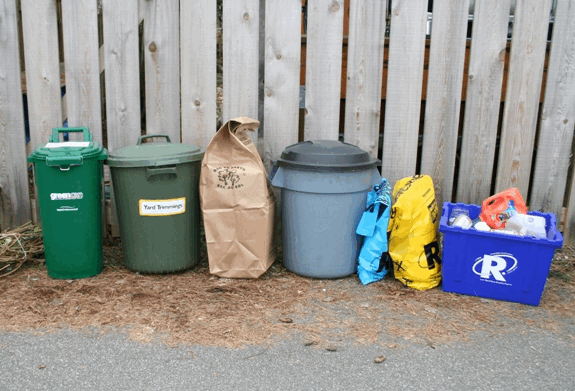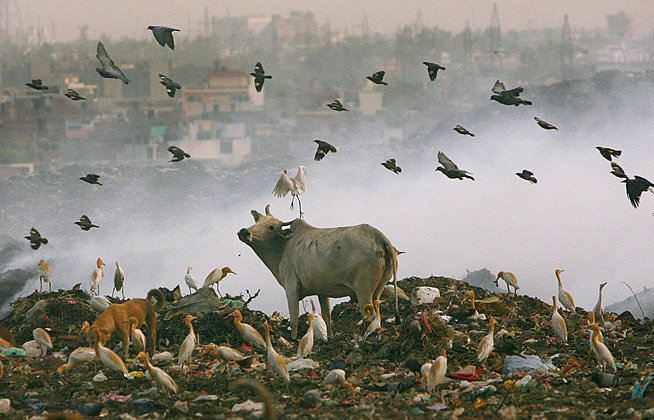- Details
- Written by Mathew Thomas
- Hits: 25263
Smart People or Smart Cities?
“Smart Cities” is the new, not so smart, slogan; whatever it might mean. The word, “Smart” could be used as an adjective, a verb or as a noun. It usually is, and is supposed to be, used in relation to humans or other animate beings. Even a monkey or dog could be smart. It is difficult to conceive of inanimate objects, like cities, as smart. The label could be the kind of “Innocent fraud” Galbraith describes in his monograph, “The Economics of Innocent Fraud”. Sometimes, one does assign human attributes to cities and the like, indirectly referring to the people in it. “Smart” as an adjective, may describe attire, (well dressed) or mental faculties (intelligence) and so forth. As a verb, the word best explains the physical or psychological state when suffering sudden pain. When a person feels sharp pain caused by say, a bee sting, he / she could be said to smart under its effect. Someone feeling upset, indignant, offended, wounded or annoyed may also be pictured as smarting due to the thing which, caused of these mental states. Perhaps, this is how most people would feel, when the “smart cities” plan is implemented; they would feel the sharp sting of unkept and broken government promises!
For over ten years, there was the “urban renewal mission”, with the acronym, JN-NURM. The state of “renewal” is there for all to see. In fact, the ‘Deccan Herald’ carried a report on JN-NURM, in its 17 September 2011 Bangalore edition, under the heading, “JnNURM, a mission unaccomplished”.
From urban renewal to smart cities the label change is just that, a change of name. A concept note on it, whose authorship is unclaimed, is available. It is on the website http://indiansmartcities.in. The note begins with the fact of urbanisation the world over and by implications assumes its inevitability. While the problems caused by urbanisation are recognized in the note the attempt appears to be to find palliatives. Sadly, even the thought of preventive measures eludes the proponents of the smart cities’ idea. No lessons are learned from either others or one’s own experience. The concept note referred above proudly proclaims, “In fact, 90% of the world’s urban population growth will take place in developing countries, with India taking a significant share of that. Urban areas also contribute a higher share of the GDP. The share of the GDP from urban areas in India has been growing”. The fixation on GDP, either in spite of knowledge regarding its drawbacks or ignorance of it, is indeed amazing. Is it not time to switch to HDI (Human Development Index) for measuring development? Urbanisation and seeking to fix ills of urban sprawl are not new. The US experience and its disastrous results should have be lesson enough, yet the smart cities’ advocates seem to fearlessly rushing into that quagmire where urban planning angels should fear to tread. There are two examples from USA, which hold important lessons for us. One is the State of California. Californian cities had the highest growth rate not just in the entire United States, but in the whole of the developed world. In the past few decades urban population there has grown by half a million persons each year. More than 80 % Californians live in metros with a populations exceeding 1 million. The State became bankrupt in 2010. It had to cut welfare programs for children and impose heavy taxes to recover. Even so the ability to pay teachers pensions and meet such expenditure is still a question mark.
The California model of urban expansion is sought to be replicated here through the smart cities initiative. Cities expand by pouring concrete and raising glass covered high-rises, devouring agricultural lands, destroying water and food sources, which are then sourced from distant places and are that much more costly. Here is a picture which, shows how cities are gobbling up farmlands
 |
|
From ‘National Geographic’ - A Northern Virginia housing development encroaches on farmland. Population growth and relocation is threatening rural environments across the world. Photograph by Sarah Leen |
The other example is that of Detroit. The city filed for bankruptcy on 18 Jul 2013. It is the largest city in USA ever to file for bankruptcy; twice as large as Stockton, California, which filed in 2012. India does not have “Chapter 9” bankruptcy protection as the US. If the smart cities idea is implemented it is quite likely that Indian cities would be sold to pay Municipal debts!
During the industrial revolution era, migrations to urban areas took place to fill the need for labour and the cities were able to provide employment to those who migrated. Living conditions improved over time both through legislation and the need to retain and motivate the workforce. Urbanisation in developing countries happening now is different. It is caused by poor peasants seeking livelihoods not available in rural areas due their lands being acquired for infrastructure – roads etc. or due to natural disasters like, droughts, floods and so on or due to war, riots and other upheavals. These migrations create slums and result in insanitary, polluted, chaotic cities with huge unemployment and crime. These cities cannot afford to feed, shelter or clothe the migrants. They become festering human infernos. Typical of the insanity in adoption of the “California model” of urban expansion, is China. Chinese urban population has grown three times since 1990. Seven hundred new cities have come up, apart from uncontrolled expansion of existing cities. This has resulted in unimaginable social and physical imbalance. Over four hundred Chinese cities suffer from water shortage. A 1200 KM canal built to divert water to areas of need has done little to alleviate the shortage. The project displaced 300,000 people from their homes. World Bank estimates that water shortage costs China over 2 % of its GDP due to damage to health. From a need of 1000 cubic meters per year per person, 11 of China’s 31 provinces have less supply than this. Each Beijing resident has only 145 cubic metres a year of available fresh water. Does India want to repeat the mistake of the Chinese urbanisation model?
Is there a solution to the urban chaos? Of course, there is. The way out is to prevent migration from villages into cities. This is achievable. Instead of smart cities, government should work towards helping people become smarter. Public spending on education and imparting livelihood skills should be the priority. Improve the quality of life in rural areas. Increase agricultural efficiency. Ensure remunerative prices for farmers. Create cold chains and cold storages. Overhaul agriculture product marketing systems and institutions. Incentivize businesses to relocate to hinterland and move out of cities. Create infrastructure to aid business in such regions. Totally fresh thinking is needed. Technology or IT is of no use when thinking is muddled, hidebound and is a repeat of mistakes of other nations. People are the greatest resource of any organisation or nation. Develop people first. Better people would help themselves to develop better quality of life. For this give up outmoded measures of economic progress, such as GDP, and instead use HDI to define economic goals and measure economic performance.
Mathew Thomas
Villa 18 A, Adarsh Vista, Basavanagar,
Bangalore 560037
Mobile: 98800-00401
- Details
- Written by Mathew Thomas
- Hits: 50144
CASH FOR VOTES OUTSIDE PARLIAMENT
Government's effort seems to be to prove an impractical and stupid idea / scheme. Subsidies will reach less number of people, due to the difficulty in accessing. Government can then claim success. Government and UIDAI are hiding facts. For example, government puts out media reports that several Lakhs of fake ration cards have been detected. They never say, who made these and how or what action was taken on those who made these. How will cash transfers prevent money being credited to accounts of those who are not eligible? The problem of leakages of subsidies is not due to lack of identities or fake identities. it is due to decisions on eligibility. These decisions are taken by politicians or under their pressure. Cash transfers would make siphoning off subsidies easier by facilitating sending money to people who are not eligible. It would be used to but votes. All political parties would like such schemes. They can then continue buying votes.
Here is the Link to the news story in 'The Hindu' on the ground reality of cash transfer.
- Details
- Written by Mathew Thomas
- Hits: 187619
How FDI in Retail affects the ‘Mango Man’
Here is a simplified explanation, sans economic jargon, to help understand FDI in Retail and what it has in store for the aam aadmi – ‘The Mango Man’. Let us start with an analogy. When a falling stone hits the ground its energy is converted and dissipated as heat. However, if the same stone lying on the ground is heated, it does not take off. Why is this so?
What is the relevance of the falling stone to FDI in Retail? The question is answered later, here. To answer it, it is necessary to traverse the process by which the Government’s decision on FDI in Retail came about to see whether it was a well-reasoned exercise.
What is FDI in Retail? It means ‘Foreign Direct Investment’ of 51 %, a controlling stake, is permitted to any foreign company to set up retail trade in India. Simply put, a number of foreign-owned supermarkets would sprout all over the country. At a political party rally in Delhi, the leaders extolled the virtues of FDI in Retail as symbolic of the party’s reforms agenda. Was this a diversionary tactic to draw attention away from the scandals swirling around? Perhaps, it was so. The phrase, ‘Economic reform’ has many different meanings depending on ideological and political leanings. One view is that between 1875 and 1975 it meant more government and since then it means less government intervention or free run for market forces. A Wall Street view says that it means, “Change for the better as a result of correcting (economic) abuses”. This definition of economic reform would raise questions of ‘Better for whom?’ and ‘whose abuses would the reforms correct?’ Did the post 1975 reforms in USA correct the abuses by financial wizards that led to the 2007 – 08 meltdown? A third view holds that economic reform refers to policies directed to achieve improvements in economic efficiency. Which of these did the rally leaders have in mind when they toasted the FDI reform push?
A lot has been written about FDI in Retail. Those for it, painted rosy pictures of benefits such as better prices for farmers, more jobs, better shopping experience and so forth. Those against it predicted the opposite. Few had hard facts to back their arguments. None of the writings referred to any evidence in arriving at the decision. The views on FDI in Retail are like the blind men feeling the proverbial elephant to describe it. It is strange that neither the Government nor the opposition referred to the report of the Parliament Committee which examined FDI in Retail. The Committee seems to have done a comprehensive study, examining a number of witnesses, individuals, NGOs and trade bodies, traveling around the country, studying reports and experiences of other nations and asking questions of government departments. The Committee concluded that more people would lose jobs that the number that would find work. They said that FDI in Retail would destroy large numbers of small and marginal farmers. They cautioned against the probable monopolistic behaviour, predatory pricing and attendant consequences. The Committee found that unorganized retail provides livelihoods for 40 million people, that is, for about 8 % of the country’s workforce. Referring to the projection of FDI in Retail creating 2 million jobs, the Committee said that this was exaggerated and that this ignores 200 million people who depended on retail trade for a living. The Committee was not only critical of FDI in Retail, but also of any large corporate in retail business. The Committee drew a dismal picture of the effect of FDI in Retail on the ‘Mango Man’.

With FDI in Retail, shops like this will disappear. How sad.
ICRIER carried out two studies, one in 2008 and the other in 2011. The 2011 study predicts a great shopping experience for consumers. ICRIER surveyed 300 consumers, in high and middle income groups. Evidently, the Government relied on the ICRIER recommendations, rather than on the Parliament Committee report. Does the reliance on a private organisation’s recommendations in opposition to Parliament, have anything to do with the chairperson of ICRIER bearing the same surname as the Deputy Chairperson of the Planning Commission?

ICRIER’s sample of 300, from high and middle income brackets, for a population of 1.2 Billion, with over 40 % poor, for recommending foreign investment, is questionable. In reply to a RTI query on whether the Government had done any study on FDI in Retail, the Commerce Ministry replied that it had not done any such study. The reply referred to the ICRIER report and not the Parliament Committee report. The Committee’s report was not discussed in Parliament. Rejecting the Parliamentary panel study and accepting a private study report, does not augur well for Parliamentary democracy. ICRIER says consumerism promotes economic growth. The earlier study (2008) surveyed 2020 unorganized small retailers out of 6 Million shops. None of the studies addressed the issue ‘why India requires FDI in Retail?’ Would it lead to a net increase in foreign currency earnings, improve India’s balance of trade? Stiglitz views on FDI in Retail are significant. He asks, “Why India needs foreign entrepreneurs in any sector, particularly the retail? He then talks of the power of Walmart to drive down prices and suggests that they will use that power to have Chinese goods displace Indian goods. Next, he draws attention to Walmart’s abusive labour practices. He asks, “Why would you want to import such practices into India?” Why indeed? The foreign retail lobby reportedly spent over Rs. 52 Crores in India. Could that be the reason why? He also talked about increasing inequality that Indian reforms are ushering in, accompanied by corruption.
It is appropriate to now look at the falling stone analogy. To see the relevance of it look at two economic philosophies prevalent today. One is the ‘Trickle-down’ variety. Subscribers to this believe in less and less of government. The market would correct itself. De-regulation is the key. Concessions to the rich would lead to investments and economic growth. This would trickle down to the poor. The second view holds that left to itself, unregulated market economies, would become so disorderly that the human costs would be enormous. FDI in Retail is integral to ‘Trickle-down’ economics. It is part of the reforms’ cry for deregulation. No lessons have been learned from the deregulation induced meltdown. That is why the Government and proponents of FDI in Retail do not bother about its effect on 6 million small shop-owners or the 50 % of the farming-dependent population who would lose their livelihoods. Some of these dispossessed may find jobs in the retail supermarkets, as shop assistants or labourers. Does deregulation help them? The stone does not take off when heated because heating causes disorder. The heat energy is random, disorderly; the stone’s molecules fifthtle each other randomly. Hence, they cannot lead to orderly motion of the stone. The natural propensity of things is to move towards chaos. Markets are no exception. Without regulation the result is disorder. FDI in Retail is an example of deregulation-thinking devoid of any safety net for its after-effects. Would the Government consider the Parliament Committee report or treat Parliament with disdain?
- Details
- Written by Mathew Thomas
- Hits: 29421
Would UID / Aadhaar Prevent Corruption?
In an interview on ‘IBN Live’, the UIDAI Chairperson said “I certainly don’t believe that by passing a law or putting more penalties on bureaucrats or creating more inspectors is going to solve the corruption problem. That's absolutely the wrong prescription. Fixing delivery system is more important. Fight corruption by having a bunch of OB vans is not going to solve the problem. ”
The sarcasm in decrying IAC and hubris in the claim are evident.
How would UID prevent corruption? In response to the interviewer’s question, Nilekani admitted that UID couldn’t decide eligibility. Left unsaid and unasked by both Nilekani and interviewer was, discretion in decision on eligibility is one of the causes for corruption. It does NOT require much intelligence to know that diversion of subsidised products and false accounting indulged in by politicians and bureaucrats is the modus operandi of corruption.
Nilekani also admitted that UID would not prevent corruption, like in coal (block) allocation.
One wishes that the interviewer could have asked two questions. One, which of the scams exposed in media, CWG, 2G, “Damaaji”, etc, would have been prevented by UID? Second, which is the greater and more destructive form of corruption?
Perhaps, public-spirited citizens could raise these questions by posting comments on the ‘IBN Live’ story.
Please follow the link below to access it.
- Details
- Written by Mathew Thomas
- Hits: 29967
Wealth from Waste
All cities and towns struggle to cope with garbage. India is no exception to this phenomenon. Modern life’s activities generate huge amounts of garbage. City governments collect and move the garbage to landfills on the outskirts. As cities expand, the garbage landfills are moved further and further. Garbage has hence to be transported to greater distances. Precious land is lost to garbage dumps. In this generally dismal scenario it is gratifying to see that some cities are not only able to handle the problem quite well, but also create wealth out of garbage.
As the garbage they generate is overwhelming Indian cities, they could learn from the experience of some cities abroad who have successfully cracked the garbage problem. Malmö in Sweden is one such city. Here’s how they do it.
Thousands of households in Malmö sort food waste. The food waste collected is used to produce biogas for vehicle fuel and heating homes. The ‘Turning Torso’, one of Malmö’s apartment complexes, symbolizes the city’s attention to the eco-cycle. Each of the 147 apartments has a garbage disposal unit, which decomposes food and disposes it to a central tank. This organic sludge is used to generate biogas, which in turn is used for home heating. The project was initiated as far back as in 1959. Today a large proportion of the city is connected to one of Sweden’s largest district heating networks. Much of Malmö’s heat energy (65 %) is provided by ‘waste’ sources. Malmö’s entire bus fleet is engineered to run on gaseous energy. The gas is a mix of natural gas and biogas, and sometimes hydrogen too!
Recycling is Malmö’s strength. All Malmö residents separate waste and help recycling it. To help them, the municipal housing company, MKB, has constructed weatherproof complexes (miljöhus) for waste separation in apartments managed by MKB. Each miljöhus has differently coloured containers visibly labeled to recycle glass, newspapers, cardboard, metal, soft and hard plastic and batteries, and other remaining waste. Here is a picture (Figure 1) of differently coloured garbage containers left outside an apartment for collection.
All cities and towns struggle to cope with garbage. India is no exception to this phenomenon. Modern life’s activities generate huge amounts of garbage. City governments collect and move the garbage to landfills on the outskirts. As cities expand, the garbage landfills are moved further and further. Garbage has hence to be transported to greater distances. Precious land is lost to garbage dumps. In this generally dismal scenario it is gratifying to see that some cities are not only able to handle the problem quite well, but also create wealth out of garbage.
As the garbage they generate is overwhelming Indian cities, they could learn from the experience of some cities abroad who have successfully cracked the garbage problem. Malmö in Sweden is one such city. Here’s how they do it.
Thousands of households in Malmö sort food waste. The food waste collected is used to produce biogas for vehicle fuel and heating homes. The ‘Turning Torso’, one of Malmö’s apartment complexes, symbolizes the city’s attention to the eco-cycle. Each of the 147 apartments has a garbage disposal unit, which decomposes food and disposes it to a central tank. This organic sludge is used to generate biogas, which in turn is used for home heating. The project was initiated as far back as in 1959. Today a large proportion of the city is connected to one of Sweden’s largest district heating networks. Much of Malmö’s heat energy (65 %) is provided by ‘waste’ sources. Malmö’s entire bus fleet is engineered to run on gaseous energy. The gas is a mix of natural gas and biogas, and sometimes hydrogen too!
Recycling is Malmö’s strength. All Malmö residents separate waste and help recycling it. To help them, the municipal housing company, MKB, has constructed weatherproof complexes (miljöhus) for waste separation in apartments managed by MKB. Each miljöhus has differently coloured containers visibly labeled to recycle glass, newspapers, cardboard, metal, soft and hard plastic and batteries, and other remaining waste. Here is a picture (Figure 1) of differently coloured garbage containers left outside an apartment for collection.
Some cities set rules for curbside garbage collection Vancouver is one such city. A few of its laws are outlined below.
Pick-up Times

Garbage, recycling, green cans and yard trimmings must be at the curb not earlier than 5.30 AM and not later than 7.30 AM on the morning of collection.
Collection routes can change without notice and pick-up can occur any time after 7.30 AM.
Set out your items in the morning - and not the night before - and always place bags inside a cans with a lid on top.
All solid waste containers and stored within the property by 9 P. M. on collection day.
Adhering to West Vancouver's pick-up times is important to prevent wild-life and bear problems.
Weekly Garbage Limits
The limit is a maximum of two cans a week (totaling 150 liters) for single-family households. Purchase of garbage tags ($ 6 for each extra can or bag) at West Vancouver Community Center, Gleneagles Community Center and Municipal Hall.
Other Setout Requirements
Set out your garbage, recycling, green cans and yard trimmings in a straight line along the curb so that the crews can move quickly.
Yard trimmings and green cans are collected by the same truck, so please place them together at the curbside. Place Blue and Yellow Bags next to your Blue Box (not inside) with top folded to keep materials dry. Always put your Blue Box out with your Blue and Yellow Bags so the crews can use the weight to keep the bags from blowing away. Using bungee cords / straps, ropes or string to tie the lid on to cans is prohibited and will result in your garbage or yard trimmings not being collected.
Waste to Wealth:
What happens to Malmö’s waste? Ninety eight percent of waste is collected in Malmö. Only about 2 percent goes to landfills. The waste they generate is used to heat their homes and offices and pave their streets with ash from burnt trash. Malmö’s kitchen and food waste is converted into biogas, which is used to run the city’s entire fleet of buses. About 65 % of the city’s heating energy comes from waste incinerators. The city has a district heat grid encompassing it. Waste incinerators also contribute 10 % of their electricity needs. All this does not come without effort. The city administration, its citizens, NGOs and private companies participate in managing and using waste. Apart from such joint effort, positive and negative incentives are critical elements in the process. Thus, in some cities, citizens receive tax breaks for separating domestic waste and placing it in the right location for disposal. Slum dwellers receive bus passes or milk sachets for such conduct.
Can Indian cities learn to manage waste as these do? Can the picture below be history?

Picture above is of a garbage site in India
But, the answer to the previous question is, "Yes, and why not?" India generates about 55 million tons of Municipal Solid Waste (MSW) and 38 billion liters of sewerage annually. The energy potential from this waste is 1700 MW. Another 1300 MW could be generated from industrial waste. The possibilities are immense, but first look at how others manage waste.
The rules of Vancouver city mentioned here are indicative of the discipline needed to successfully manage waste. The first requirement therefore, would be discipline on the part of citizens. This could be brought about first, by creating awareness, through as many ways of communicating with city residents as possible. City administrators, NGOs, private waste recycling companies – all must be involved. Next, the city administration could lay down rules with aspects of positive and negative reinforcement. Every house and apartment block should have a mandatory compost pit. The organic fertilizer should be collected, compensating the homeowners either by cash payment or reduction in property taxes. Similarly, in all residential localities where biogas power plants are viable, these should be set up. Public power utilities could actively promote this. The power should be supplied to the local residential area free of cost or at very low cost or pumped into the grid and the residents suitably compensated. Public or private biogas power utilities could collect kitchen and food waste from hotels and restaurants and large power plants set up to feed the power into the state grid. These commercial establishments too should have incentives for such a program to succeed. All buses could be converted to run on mixtures of biogas and CNG. Transport companies could get involved in waste management.
It is necessary to manage waste before it overwhelms cities and towns, rivers and water bodies. The earlier the problem is addressed through concerted joint efforts, the better it would be.
















